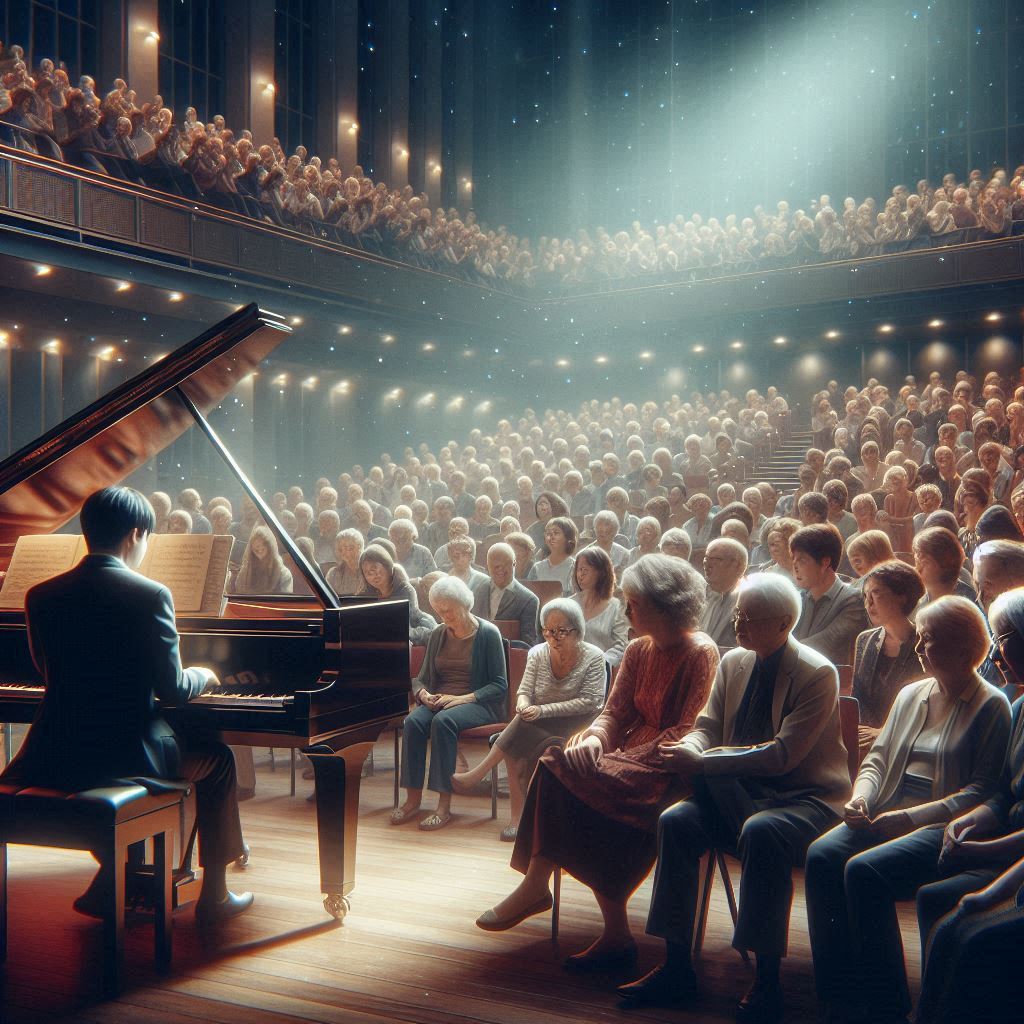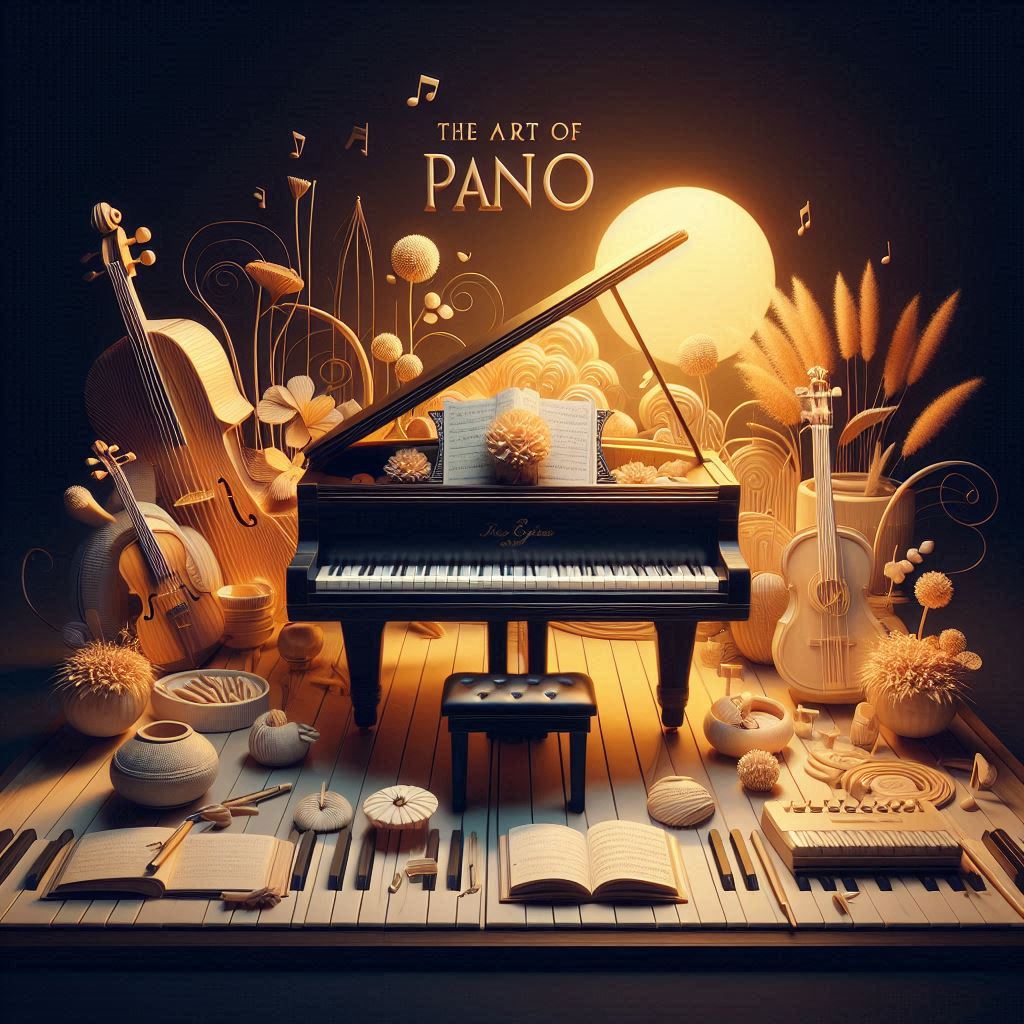Introduction
Playing the piano is a journey through a rich tapestry of history, emotion, and technical prowess. From the timeless works of Beethoven and Chopin to contemporary compositions that push the boundaries of the instrument, the piano repertoire offers a wealth of music that every pianist should explore. In this article, we’ll delve into the top 10 piano pieces that every pianist should know, each offering unique challenges and rewards that will enrich your musical journey.
Thank you for reading this post, don't forget to subscribe!1. Beethoven’s “Moonlight Sonata”
Overview and History
Ludwig van Beethoven’s “Moonlight Sonata,” officially known as Piano Sonata No. 14 in C-sharp minor “Quasi una fantasia,” Op. 27, No. 2, is one of the most beloved pieces in the piano repertoire. Composed in 1801, this piece is renowned for its emotive depth and technical demands.
Analysis of Movements
The sonata consists of three movements:
- Adagio sostenuto
- Allegretto
- Presto agitato
Technical Challenges
The first movement requires delicate touch and control, while the third movement demands speed and precision.
Why Every Pianist Should Know It
Its profound emotional expression and technical challenges make it a staple for pianists aiming to develop both their interpretative and technical skills.
2. Chopin’s “Nocturne in E-flat Major, Op. 9 No. 2”
Overview and History
Frédéric Chopin’s Nocturne in E-flat Major, Op. 9 No. 2, composed in 1830-1832, is a quintessential romantic piece. It embodies the elegance and lyrical beauty that characterize Chopin’s work.
Musical Structure
The piece features a lyrical melody supported by a rich harmonic accompaniment, showcasing Chopin’s ability to blend simplicity with complexity.
Technical Challenges
The pianist must master expressive phrasing and control over dynamics to capture the piece’s emotional nuances.
Why Every Pianist Should Know It
Its beauty and emotional depth make it a perfect piece for developing expressiveness and touch.
3. Bach’s “Prelude and Fugue in C Major, BWV 846”
Overview and History
From Johann Sebastian Bach’s “The Well-Tempered Clavier,” the Prelude and Fugue in C Major, BWV 846, is a cornerstone of Baroque keyboard music.
Musical Structure
The prelude is a series of arpeggiated chords, leading into a fugue with a lively, intricate subject.
Technical Challenges
This piece demands precise fingerwork and the ability to bring clarity to complex polyphony.
Why Every Pianist Should Know It
It is essential for understanding counterpoint and developing finger independence.
4. Debussy’s “Clair de Lune”
Overview and History
Claude Debussy’s “Clair de Lune,” part of the “Suite Bergamasque,” is a masterpiece of impressionist music, composed in 1890 and revised in 1905.
Musical Structure
The piece features flowing, dream-like melodies and rich harmonies that evoke a sense of tranquility.
Technical Challenges
Mastering the subtle dynamics and voicing in this piece requires advanced control and a delicate touch.
Why Every Pianist Should Know It
Its ethereal beauty and technical demands make it a vital piece for developing a nuanced touch and interpretive skill.
5. Liszt’s “Hungarian Rhapsody No. 2”
Overview and History
Franz Liszt’s “Hungarian Rhapsody No. 2” is one of his most famous works, celebrated for its virtuosic demands and dramatic flair.
Musical Structure
The piece is structured in a lassan (slow section) and a friska (fast section), embodying Hungarian folk influences.
Technical Challenges
It requires tremendous technical prowess, including rapid octaves, intricate fingerwork, and expressive playing.
Why Every Pianist Should Know It
This piece is a showpiece for technical virtuosity and a thrilling addition to any pianist’s repertoire.
6. Rachmaninoff’s “Prelude in C-sharp Minor, Op. 3 No. 2”
Overview and History
Sergei Rachmaninoff’s Prelude in C-sharp Minor, Op. 3 No. 2, composed in 1892, is a powerful, dramatic work that has captivated audiences since its premiere.
Musical Structure
The piece features a bold, declamatory opening, a lyrical middle section, and a return to the dramatic theme.
Technical Challenges
The pianist must navigate the contrasting dynamics and the intense, virtuosic passages.
Why Every Pianist Should Know It
Its dramatic intensity and technical demands make it a compelling piece for performance and study.
7. Mozart’s “Piano Sonata No. 16 in C Major, K. 545”
Overview and History
Wolfgang Amadeus Mozart’s Piano Sonata No. 16 in C Major, K. 545, known as the “Sonata Facile,” is beloved for its clarity and classical elegance.
Musical Structure
The sonata consists of three movements:
- Allegro
- Andante
- Rondo: Allegretto
Technical Challenges
Though considered “easy,” the piece requires precision and clarity in articulation and phrasing.
Why Every Pianist Should Know It
Its classical form and clear structure make it a fundamental piece for understanding classical style.
8. Schubert’s “Impromptu in G-flat Major, Op. 90 No. 3”
Overview and History
Franz Schubert’s Impromptu in G-flat Major, Op. 90 No. 3, is a lyrical, introspective work that showcases Schubert’s melodic genius.
Musical Structure
The piece features a flowing, song-like melody supported by a delicate accompaniment.
Technical Challenges
Control over voicing and pedaling is essential to maintain the piece’s lyrical quality.
Why Every Pianist Should Know It
Its expressive beauty and technical demands make it a vital piece for developing lyrical playing.
9. Scriabin’s “Étude in D-sharp Minor, Op. 8 No. 12”
Overview and History
Alexander Scriabin’s Étude in D-sharp Minor, Op. 8 No. 12, composed in 1894, is a powerful, passionate work that highlights Scriabin’s early Romantic style.
Musical Structure
The étude is characterized by its dramatic, intense themes and virtuosic passages.
Technical Challenges
The pianist must master rapid arpeggios, wide leaps, and dynamic contrasts.
Why Every Pianist Should Know It
Its intensity and technical demands make it an exciting challenge for advanced pianists.
10. Gershwin’s “Rhapsody in Blue” (Piano Solo Version)
Overview and History
George Gershwin’s “Rhapsody in Blue,” composed in 1924, blends classical and jazz elements in a uniquely American style.
Musical Structure
The piece features a series of contrasting sections, blending blues, jazz, and classical themes.
Technical Challenges
The pianist must navigate complex rhythms, syncopation, and a wide range of dynamics and articulations.
Why Every Pianist Should Know It
Its fusion of styles and technical challenges make it a fascinating and rewarding piece to learn and perform.
FAQs
What makes Beethoven’s “Moonlight Sonata” so popular?
Beethoven’s “Moonlight Sonata” captivates audiences with its emotive depth and technical challenges, especially the dramatic contrast between the serene first movement and the fiery final movement.
Why is Chopin’s “Nocturne in E-flat Major” important for pianists?
Chopin’s “Nocturne in E-flat Major” is essential for its beautiful, lyrical melody and the emotional expression it demands, helping pianists develop their interpretive skills.
What technical skills are developed by playing Bach’s “Prelude and Fugue in C Major”?
Bach’s “Prelude and Fugue in C Major” develops precise fingerwork, independence of hands, and a deep understanding of counterpoint and polyphony.
How does Debussy’s “Clair de Lune” enhance a pianist’s abilities?
“Clair de Lune” enhances a pianist’s ability to create nuanced dynamics and expressive phrasing, crucial for impressionist music.
What challenges does Liszt’s “Hungarian Rhapsody No. 2” present?
Liszt’s “Hungarian Rhapsody No. 2” presents challenges of rapid octaves, intricate fingerwork, and expressive playing, making it a showcase of technical virtuosity.
Why should pianists learn Rachmaninoff’s “Prelude in C-sharp Minor”?
Rachmaninoff’s “Prelude in C-sharp Minor” offers dramatic intensity and technical demands, perfect for developing strength and expressiveness.
Conclusion
Exploring these top 10 piano pieces will not only enhance your technical abilities but also deepen your understanding of different musical styles and eras. From the classical elegance of Mozart to the dramatic flair of Liszt and the lyrical beauty of Chopin, each piece offers unique challenges and rewards. Whether you’re a beginner or an advanced pianist, incorporating these masterpieces into your repertoire will undoubtedly enrich your musical journey.



